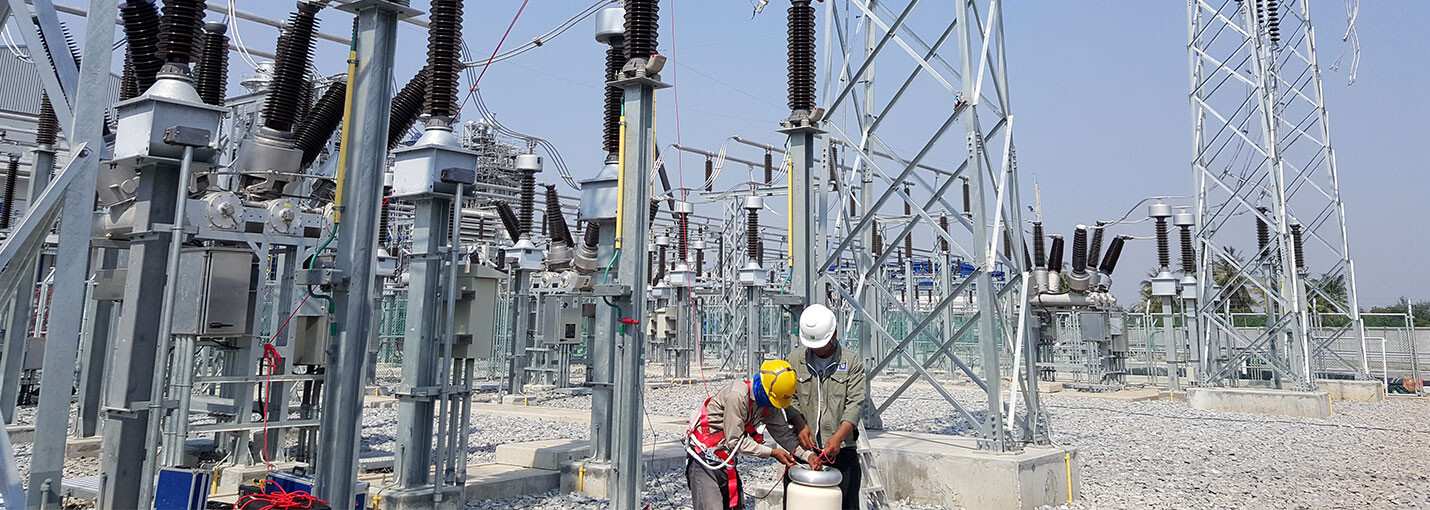Asbestos and the Electric Power Industry | What You Need to Know
The electrician trade is a much more massive enterprise than many people might realize at first glance. However, one aspect of this massive enterprise is, unfortunately, the prevailing danger of asbestos exposure and the wide range of asbestos-related illnesses and diseases that come as a result of that exposure. With that in mind, it is important to take some time to trace out the dangers of asbestos exposure within and throughout the electric power industry. Here’s what you need to know.
!
If you believe that you were exposed to asbestos, even as a child, speak to a healthcare provider about tests and screening to help diagnose lung-scarring and screen for asbestos-related diseases.
Asbestos as the Industry Standard
Asbestos has been known as a dangerous occupational exposure for many decades. However, this knowledge was often kept from workers and the general public. As a result, employees throughout the asbestos industry were exposed to microscopic asbestos fibers that cause detrimental health effects. Despite this exposure danger being relatively unknown to workers and the general public, it was a widespread danger that applied to various worksites, such as factories, foundries, shipyards, and refineries.
Part of the reason why asbestos was previously such a widespread industry danger is that it represented a material that most employees either worked directly with or worked around. For example, asbestos could be found in hands-on materials such as brake linings or vehicle parts, representing a threat to the health of mechanics.
“The overall evidence suggests there is no safe level of asbestos exposure.”Source: National Cancer Institute (NIH)1 |
Examples of Asbestos in Various Industries
However, that is certainly not the full scope of asbestos-containing products. In addition to mechanical components and parts, asbestos could be found in much more common places, such as:
Panels
Sealants
Ducts
Insulation
Shingles
Tile
Paint
Vinyl
Pipes
Drywall
Cement
Plaster
The Natural Properties of Asbestos
Of course in a list such as this, it translates to an asbestos threat that could be found anywhere and almost everywhere. But how did asbestos become such a standardized material- an industry standard? The answer to this question is an answer of nature. That is, asbestos is a natural mineral that comes in a variety of colors, appearances, and fiber forms. The two main groupings of asbestos are serpentine asbestos and amphibole asbestos, which have to do with either curl-shaped or needle-like shaped fibers. Beyond these two groups, asbestos is made up of six recognized types:
Chrysotile
Amosite
Crocidolite
Anthophyllite
Tremolite
Actinolite
“Some asbestos fibers may bypass…your body’s natural defenses…and lodge deep within your lungs. Those fibers can remain in place for a very long time and may never be removed.”Source: American Lung Association |
What All Types of Asbestos Have in Common
Predominantly, chrysotile is the most commonly used type of asbestos- the standard within the industry standard, however, the other types also have historical use in different material applications. Despite some types having more use throughout the industry compared to others, what all types of asbestos have in common is their durable qualities.
Indestructible Asbestos (even in your body)
In fact, the term asbestos is taken from the language of ancient Greeks to describe that which is indestructible or unquenchable. It was a name given to a material that seemed to have almost supernatural qualities.
Some of these qualities include song absorption, lightweight, fibrous, corrosion resistance, heat and fire resistance, non-soluble, and more. Essentially, asbestos was a mineral that could be mixed with other building materials (such as cement) to build strength and durability, increasing the shelf-life of materials that weren’t as durable on their own.
Risks and Health Concerns Related to Asbestos Exposure
Despite the seemingly supernatural qualities that asbestos provided for other materials it was applied to, the same was not true for humans who were exposed to asbestos. In fact, the opposite is true.
While asbestos provided durable qualities to materials, it exposed workers and others who swallowed or inhaled asbestos fibers to severe health problems, including lung disease, mesothelioma, and various types of cancers.
The health risks of asbestos exposure can include:
| Mesothelioma: cancer of the mesothelium, the thin layer of tissue surrounding the body’s organs. This cancer is only known to be caused by asbestos exposure. | Lung cancer |
| Laryngeal cancer: cancer of the larynx (section of the throat called the voicebox) | Ovarian cancer |
| Stomach cancer | Colon cancer |
| Pharyngeal cancer | Asbestosis: a chronic lung disease associated with asbestos exposure |
| Chronic Obstructive Pulmonary Disease (COPD) | Atelectasis (collapsed lung) |
| Pleural effusion (collection of fluid around the lungs) | Pericardial effusion (collection of fluid around the heart) |

The Asbestos Industry concealed what it knew about the health dangers of its products.
In fact, while the general information about asbestos was not well-known to the public until the publicity of the Environmental Protection Agencies’ ban on most types of asbestos in the United States in 1989, the asbestos industry was already aware of the fact that asbestos exposure poses a severe threat to personal health.
Asbestos causes cancers of the lung, throat, colon and respiratory system (mesothelioma).
In fact, exposure data is so comprehensive that today, the National Cancer Institute recognizes no safe level of asbestos exposure, and asbestos is deemed a hazard by the United States Department of Labor; regardless of how or where someone is exposed, it is a severe danger.
What Happens in the Body When Asbestos Exposure Takes Place
Asbestos fibers are microscopic. Further, they have no distinct smell or taste. If those facts were not enough to raise concerns, there is also the entire issue of how asbestos diseases and exposure symptoms often take decades to appear. The reason for this is that tiny asbestos fibers become embedded in the lungs and other organs throughout the body, causing slow and steady damage over time. By the time the damage is noticeable, it is often life-threatening or at least severely debilitating. Some of the more common forms of damage done in the body due to asbestos exposure include some familiar and unfamiliar terms:
Cancers: Mesothelioma, Ovarian, Lung, Stomach, Pharyngeal, Colon, Laryngeal
Diseases: Asbestosis, Pleural Plaques, Thickening, Effusion
Discomfort/Symptoms: Chest pain, breathing difficulty, chronic and painful coughing
These are just some examples of bodily harm caused by asbestos exposure, and they are in no way exhaustive.
People who worked in these industries prior the mid-1980s have a higher risk of developing asbestos-related diseases:
| Construction | Factories | Foundries | Refineries | Shipyards | Mining / Milling |
| Demolition | Insulation | Steelworkers | Pipe Fitting | Shipbuilding | Mechanics |
 |  |  | |||
| Roofing | Textiles | Iron workers | Boilers | Firefighting | Brake Repair |
| Flooring | Cement | Electricians | Gasket Repair | Railroad | HVAC |
Unfortunately so do their families.
Learn more about
second-hand asbestos exposure.
Electric Power Industries and Asbestos | ||
|---|---|---|
 |  |  |
With this history of asbestos use, exposure risks, and health concerns, how does the topic of asbestos relate specifically to the electric power industry? In general, electricians are responsible for the installation, maintenance, and repair of electrical power. While we typically think of this in terms of lighting and control systems inside homes and businesses, this also applies to a larger industrial scale within electric power plants. In other words, electricians are just as vital at the service sites (homes, businesses, etc.) as they are at the source site. | ||
Machinery at Facilities in the Power Plant Industry
These source sites are known as electric power plants– the place where electricity is actually generated and distributed. Electric Power Plants are some of the most important industrial facilities since they play a key role in helping you and me maintain our 21st-century lives of technological innovation. These facilities include things like large turbine engines generators and many other components are must be operated and maintained around the clock.
There are of course a range of hazards that the Occupational Safety and Health Administration (OSHA) recognizes in electric power distribution. Most people think of risks like electrocution, which is true, but in terms of the plants themselves and the risks they pose to workers, it should come as no surprise that asbestos is a key material danger.
“Generally, those who develop asbestos-related diseases show no signs of illness for a long time after exposure.”Source: National Cancer Institute (NIH)2 |
Why Asbestos Was the Go-To in Power Plants
Part of the reason for this is because of how extensively asbestos was used in the construction of facilities (including power plants) up until the EPA’s ban in 1989. The concrete foundation, roofing materials, and much more could reasonably be assumed to contain asbestos in those buildings constructed prior to 1989. But it doesn’t stop there. Asbestos, because of its lack of electrical conductivity, worked great to protect electrical components, particularly to insulate machinery and protect them from heat.
Abatement Efforts: Good, but Ongoing
Ever since the ban on asbestos, various abatement initiatives have been taking place throughout the United States to remove asbestos from buildings and work environments. There have even been abatement projects for naval vessels in order to protect current military personnel from being exposed to the same dangers that veterans were unaware of. Power Plants are part of that list, but there still remain ongoing abatement projects to this day.
While abatement efforts are a necessary part of protecting people today, what about those who were unknowingly exposed to asbestos for decades? The good news is, there are options for you.
Do You Qualify For Compensation?
Quickly and easily find out how you were exposed by searching W.A.R.D., the largest asbestos database on the planet.
FREE SEARCH >Legal Options Related to Asbestos Exposure
Asbestos claims are a common way to hold companies accountable and receive compensation for yourself or a family member who contracted an asbestos-related disease due to asbestos exposure.
Asbestos Trusts are often the better option (generally faster and easier than a lawsuit).
However, these are not the only option available, nor are they the fastest. Going to court often implies a longer process, more fees, and a higher possibility of failing to receive the compensation you are seeking. Adding in the severe experience of an asbestos-related disease, most people do not have the time or energy to wait for the uncertain legal process to take place.
Over $30 Billion is still available (No lawsuit. No fees unless you receive money. No risk.) Stake your claim.  |
Asbestos trusts are an excellent alternative to legal action because they are not a lawsuit at all. This means good things for you, including a faster turn-around time, no depositions, and fewer fees. Asbestos trusts are previously set-aside funds, totaling over $30 billion still unused today, that can be used to compensate victims. There are requirements for these funds, but an asbestos attorney can help you each step of the way- all while avoiding the need to go to court!
What’s more, there are specific asbestos trusts set aside for those with a work history in the electric power plant, or those who helped construct those facilities. Getting professional help from an asbestos claims attorney is risk-free and these professionals can help provide you with the expertise to determine what the best compensation option is for you.
AsbestosClaims.Law
At AsbestosClaims.Law, our mission to secure compensation for asbestos victims is more than professional; it’s personal.
They’re a mission.
In the past, workers exposed to asbestos were kept in the dark about the dangers of asbestos exposure. Among those workers were Justinian’s grandparents and his own father.
Unfortunately, they were also kept in the dark about the compensation options available to them, such as asbestos lawsuits and trust funds. In their later years, they died from asbestos-related cancers.
Because no one in Justinian’s family knew their options, they never received any compensation for the death of their loved ones.
Today, we’re working to turn the tide.
Significant compensation may be available to you if you have contracted an asbestos-related illness or injury. This includes workers as well as family members who have been exposed.
Compensation is your key to receiving the medical treatment you need, funding asbestos removal services, and maintaining your physical well-being.
Want to know one of the quickest and easiest ways to receive compensation? Let us talk to you about asbestos trust claims. This option can often avoid lawsuits altogether.
We want to hear your story, and more importantly, we want to bring redemption to it.
Need help filing a claim? No problem, you can email us at [email protected].
Would you rather talk over the phone? Simply call or text us, at (206) 455-9190.
You won’t pay a penny to us unless you receive money first, so there’s no risk.
In addition to legal claims, veterans disability, social security and employment protection like workers compensation, FELA and The Jones Act for maritime workers, there are asbestos trusts that have been set up to compensate those harmed by asbestos without having to file a lawsuit.
The dangers of asbestos used to be an industry-guarded secret kept from suffering people like Justinian’s family. Not anymore. We’re bringing you the truth.
We’ve created numerous resources to help answer your questions and empower you with the information you need to know and act on.
Our website has a wealth of information dedicated to things like health and safety, asbestos testing, asbestos removal, and legal information about compensation for asbestos injuries.
Are you a visual learner? No problem!
Our YouTube page has infographics, an asbestos history series, and other helpful resources for you to check out!
| Not sure where or when you were exposed to asbestos? Let W.A.R.D. help you! The Worldwide Asbestos Research Database (W.A.R.D) is the largest asbestos information database, period. If you need answers related to specific locations, products, or what type of compensation may be available to you due to asbestos exposure, W.A.R.D. is the place to start. |
Working with us is risk-free. Unless you receive compensation money, there are NO FEES! Speak to us about asbestos litigation today.
1 National Cancer Institute (NIH), Asbestos Fact Sheet.
2 National Cancer Institute (NIH), Asbestos Fact Sheet.